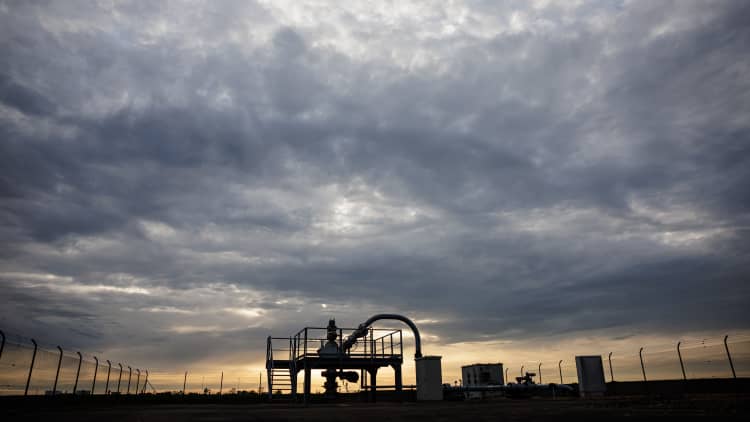From the United States to the European Union, major economies around the world are laying out plans to move away from fossil fuels in favor of low and zero-carbon technologies.
It’s a colossal task that will require massive sums of money, huge political will and technological innovation. As the planned transition takes shape, there’s been a lot of talk about the relationship between hydrogen and natural gas.
During a panel discussion moderated by CNBC’s Joumanna Bercetche at the World Economic Forum in Davos, Switzerland, the CEO of energy firm AES offered up his take on how the two could potentially dovetail with one another going forward.
“I feel very confident in saying that, for the next 20 years, we need natural gas,” Andrés Gluski, who was speaking Wednesday, said. “Now, what we can start to do today is … start to blend it with green hydrogen,” he added.
“So we’re running tests that you can blend it up to, say 20%, in existing turbines, and new turbines are coming out that can burn … much higher percentages,” Gluski said.
“But it’s just difficult to see that you’re going to have enough green hydrogen to substitute it like, in the next 10 years.”
Produced using electrolysis and renewables like wind and solar, green hydrogen has some high-profile backers.
These include German Chancellor Olaf Scholz, who has called it “one of the most important technologies for a climate-neutral world” and “the key to decarbonizing our economies.”
While some are hugely excited about green hydrogen’s potential it still represents a tiny proportion of global hydrogen production. Today, the vast majority is based on fossil fuels, a fact at odds with net-zero goals.
Change on the way, but scale is key
The planet’s green hydrogen sector may still be in a relatively early stage of development, but a number of major deals related to the technology have been struck in recent years.
In December 2022, for example, AES and Air Products said they planned to invest roughly $4 billion to develop a “mega-scale green hydrogen production facility” located in Texas.
According to the announcement, the project will incorporate around 1.4 gigawatts of wind and solar and be able to produce more than 200 metric tons of hydrogen every day.
Despite the significant amount of money and renewables involved in the project, AES chief Gluski was at pains to highlight how much work lay ahead when it came to scaling up the sector as a whole.
The facility being planned with Air Products, he explained,…
Click Here to Read the Full Original Article at Top News and Analysis (pro)…


